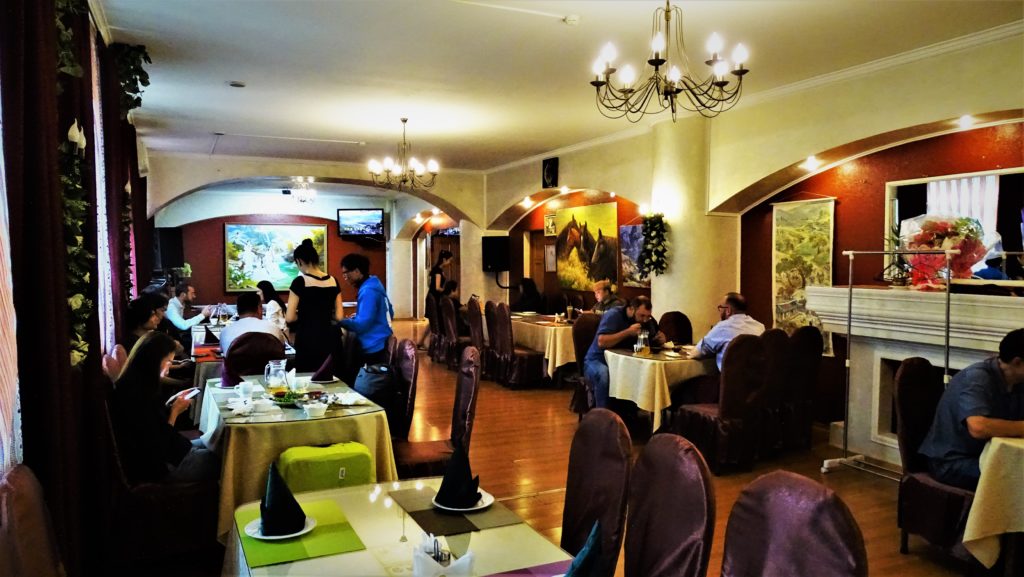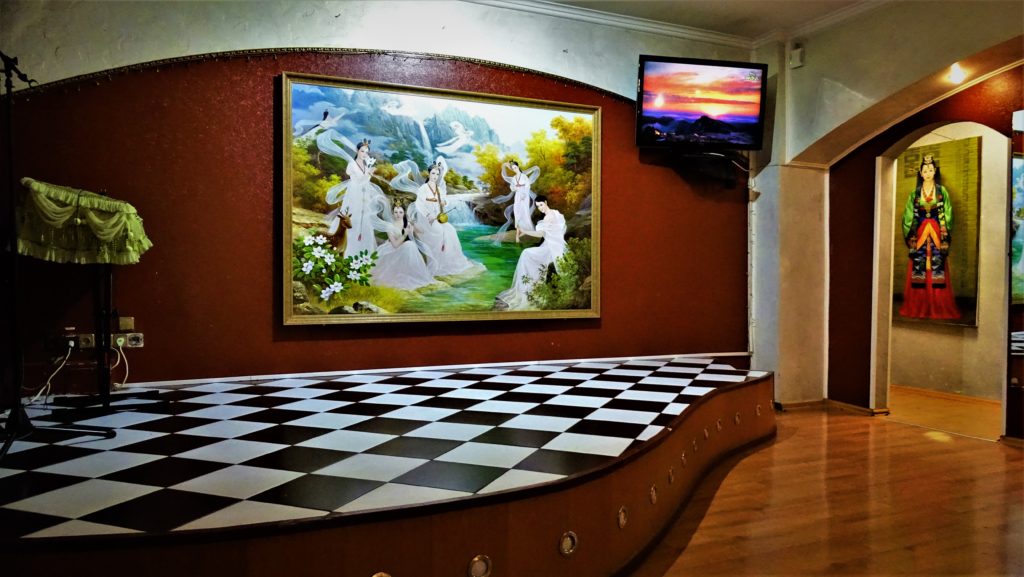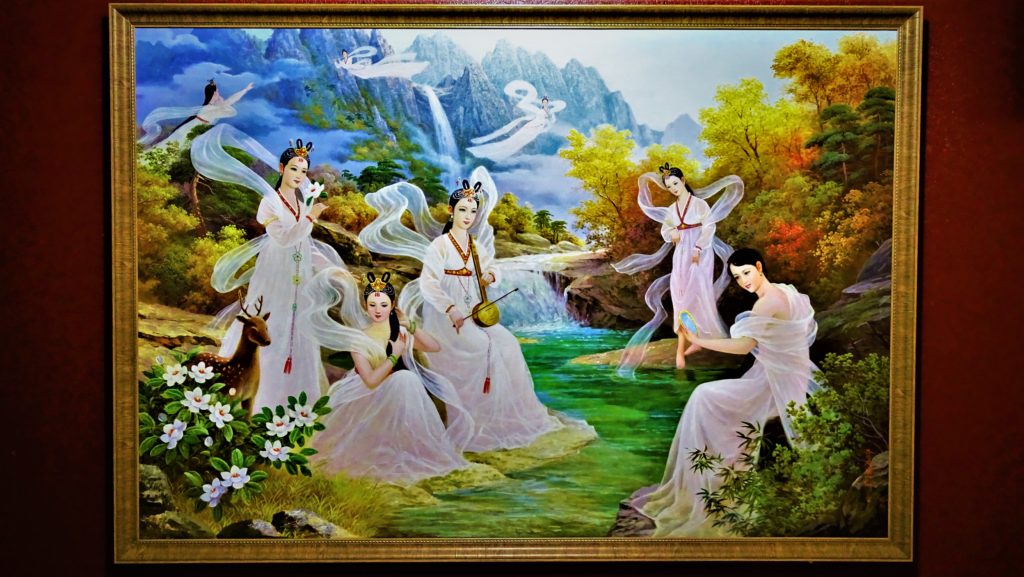Geumgang-san Restaurant: North Korean Cuisine with a Side of Propaganda
Written and photographed by Isaiah Winters
As far as Korean food goes, Jeolla-do cuisine has won me over. It’s what I’ve anchored my taste buds to and, consequently, other regional dishes often fall a bit short in comparison. Admittedly, I harbored this same favoritism on a recent visit to Geumgang-san Restaurant (금강산식당), a North Korean eatery in Vladivostok, Russia. Though part of me hoped that this showpiece restaurant would offer something above and beyond the ordinary, I still couldn’t help but assume that the highlight would be its novelty factor, not its food.
Sure enough, Geumgang-san Restaurant had novelty in spades. First to grab my attention were the waitresses. Much like at Pyeongyang Café, another North Korean restaurant I’d visited in Vladivostok three years prior, the waitresses were tall, lithe, and beautiful, similar to South Korean stewardesses. They all stood in stark contrast to the chefs in the kitchen who, well, didn’t seem to exist at all. Plates of food just appeared from some part of the restaurant with no telling where they actually came from or who prepared them. The secrecy of it all differed from many South Korean restaurants, where open kitchens often allow the cooks and clientele to exchange awkward glances.

Adding to the restaurant’s mystique was its rigid policy on indoor photographs. I was told by the staff that taking photos of the menus and in the direction of the bar (where most of the statuesque servers were) was verboten. This stern directive, plus the servers’ obvious discomfort around a foreign lens, hobbled my photo opportunities. To make matters worse, I’m no foodie, so even though I reminded myself beforehand to take pictures of our meal, I still forgot to photograph half the stuff we ordered. And so, the photo restrictions together with my food review apathy resulted in the best shots being taken outside the restaurant despite the rain.
Thankfully, where photos fail, there are words.

We ended up ordering a good but hardly outstanding portion of grilled pork (돼지 석쇠귀) and a tasty bowl of Pyongyang-style cold noodles called raeng-myeon (랭면), the latter of which caught my eye due to its unique spelling (SK: 냉면). The side dishes weren’t remarkable at all, while the generous pitcher of barley tea (보리차) was at best ho-hum. I blame communism. More memorable for me were the dishes’ uncommon names, with Korean staples like jeon (전, Korean-style pancake) being referred to as jijim
(지짐), and twigim (튀김, fried food) being called simply twigi (튀기). Sadly, no North Korean beer was on sale for us to sample.
After our meal, I began wandering around the restaurant to take in more of its many quirks, much to the waitresses’ suspicion. In the back was a black-and-white checkered stage where karaoke equipment, a bass guitar, and a keyboard awaited their next gig. Given the privilege of working abroad, I imagined the waitresses selected were also talented musicians who entertained guests with musical performances from time to time, though it’s hard to know for certain. Regardless, whoever graces that stage has to compete with the comically celestial painting mounted above it, which depicts eight heavenly nymphs in white gossamer hanbok (traditional Korean dresses) frolicking amongst a paradisiacal landscape like it’s nobody’s business.

On the opposite side of the restaurant where photos were banned, there was a cabinet lined with North Korean propaganda texts printed in Russian. Juxtaposed below these were random North Korean products like ginseng, makeup, cologne, and mushroom powder. Of course, only the propaganda was for free, like the “masterpiece” entitled The Conflict between the DPRK and the USA (2014) and the world-renowned comic book Winged Horse (1989), a children’s story originally told by Kim Il-sung himself. Like flipping through sheets of razor-thin cardboard, the pages evoked a texture and scent reminiscent of cheap Eastern European toilet paper.
Upon our departure, we were pleasantly surprised when a few of the waitresses lined up by the glossy portraits of Kim Jong-un glad-handing Trump, Xi, and Moon to bid us farewell in Korean with a deep bow. The cherry on top was the shifty-eyed ajeossi (middle-aged man) who shadowed us outside while we waited for our driver to arrive. With a cigarette pressed tightly between his lips, our minder eyed me closely as I snapped photos of the restaurant’s exterior. Of particular interest to him was my suitcase, probably because it offered him the best chance to find out where I was from. In this case, I was a Western imperialist dog with tags from ICN (Incheon) invading yet another North Korean space. Talk about a trigger warning.
The Author
Originally from Southern California, Isaiah is struggling with yet another author bio. In retrospect, he should never be allowed to review a restaurant ever again, as he didn’t even include a single picture of food. Or, like watching a monthly train wreck, maybe he should do more writing that’s out of his element just for the morbid entertainment it provides.





